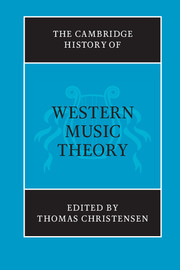31 - The psychology of music
from B - Music psychology
Published online by Cambridge University Press: 28 March 2008
Summary
The psychology of music is a subfield of psychology that addresses questions of how the mind responds to, imagines, controls the performance of, and evaluates music. The history of this subfield has been greatly influenced by the major trends and developments in the parent discipline, and the organization of this chapter follows the traditional rubrics of that history. Earlier in the twentieth century there was a frequent distinction made between Tonpsychologie (the study of vibration, the ear, and the sensation of sound) and Musikpsychologie (the study of music as a form of cognition). Though the distinction seems less clear-cut today, this chapter recognizes its historical force and focuses on the latter category, with the former receiving extended treatment in Chapter 9, passim.
Since at least the seventeenth century, proponents of one or another theory of music have frequently used the psychology of music as a touchstone. They assert propositions in the general form of “musical relationship has a valuation because there exists a relevant phenomenon or principle in the psychology of music.” For example, one might view Rameau as having asserted that “the fifth and third, as progressions of the fundamental bass have the qualities of being good, natural, and fitting because Sauveur and other acousticians have shown these intervals to be present in every musical tone, as a macrocosm within a microcosm.” Or Riemann could be viewed as having asserted that “harmonic relationships based on progressions of a major third or perfect fifth between the chordal ‘roots’ have the qualities of being directly intelligible and foundational because Helmholtz and other physiologists have shown that the frequency analysis of the inner ear privileges these intervals.”
- Type
- Chapter
- Information
- The Cambridge History of Western Music Theory , pp. 956 - 981Publisher: Cambridge University PressPrint publication year: 2002
References
- 6
- Cited by

